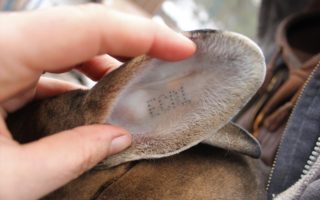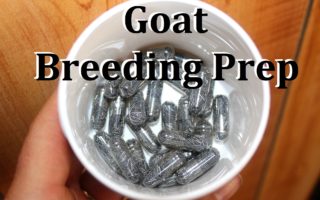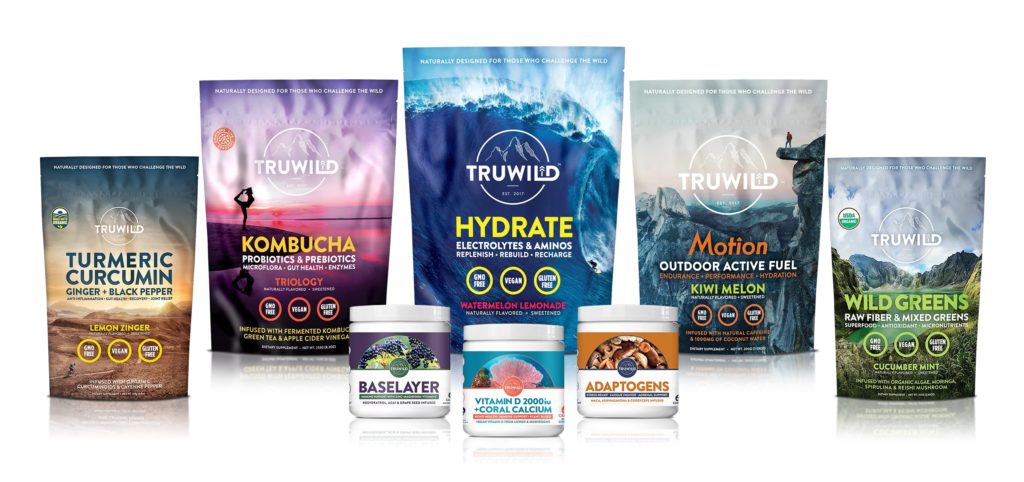DISCLAIMER: This is what I’ve used for my own goats. I’m not a vet. The following was created by doing my own research. I’d encourage you to do the same for your own animals.
Related Post: Treating Scours In Baby Goats
If you raise goats, at some point you’ll likely be dealing with scours. I’ve used CORID in the past in addition to probiotics and jump start. But CORID can be tricky to dose properly and is mainly used for cattle. I’ve had success with CORID in the past. But then one year it seemed to make things worse, and we lost a baby within a day of using it. I quickly stopped using CORID, and switched to the recipe below to take care of it naturally and was able to save the other baby.
Diarrhea is mostly seen with baby goats between the ages of 3 weeks to 5 months. The most likely culprit is Coccidiosis. Coccidiosis is caused by microscopic protozoan parasites called coccidian. Stress can trigger the diarrhea such as weaning a baby from its mom. Or in my case I moved all my goats to a friend’s house to be babysat while I was traveling out of state. When I picked the goats up, I noticed diarrhea on the back end of the baby goats.

WHAT TO DO FIRST
In a perfect world. You get a fecal done by a vet to determine what the problem is. But most farmers don’t do vets unless they are going to lose a valuable animal. When you first notice diarrhea, you can try to treat it with Pepto Bismol for the first 2 days. About 2-3 cc once per day (I do twice per day). If that doesn’t work (and it likely won’t), then you know there’s something bigger going on like Coccidiosis, parasites, virus, or bacterial overgrowth. What’s great about these herbal balls, is it takes care of all of these issues.
GOING OVER THE INGREDIENTS
Slippery Elm– A must have in any pantry whether it’s for you, the dog, or your farm critters. Slippery elm is soothing to the gut and lubricates the mucus membranes. This promotes tissue healing and acts as a prebiotic by nourishing the beneficial bacteria in the gut. It has a pleasant smell and taste and helps bind the dosage ball together.
Turmeric– Turmeric’s been known for its variety of health benefits from anti-inflammatory, improving blood circulation, improving digestion, building immune system. Well, it’s also been shown to be effective in controlling Coccidiosis.
Oregano– One of the most effective ingredients listed here. Oregano is proven to be effective against Coccidiosis. I chose to go with the oregano seasoning as it’s gentler on pallet than using the oil.
Oat Flour– Oat flour in this recipe is mainly used as a binder and to dilute the other ingredients slightly.
Molasses– Molasses helps bind everything together as well as making these balls more palatable. As an added benefit it can provide several trace minerals.
Garlic– No big surprise here. Garlic is antibacterial, antifungal, antiparasitic . . . and is effective against Coccidiosis. I chose to use sliced raw organic garlic. I believe this is the most effective version to use. You could try substituting for garlic powder (NOT garlic salt).
6 Day Recipe for one 15 lb baby goat
 You Need . . .
You Need . . .
- 6 Slippery Elm Capsules (400 mg capsules)
- 1.5 teaspoons Turmeric (organic preferred)
- 1.5 teaspoons Oregano Seasoning (organic preferred)
- 2 tablespoons Oat Flour (can grind rolled oats in blender)
- Molasses
- 1 Clove Garlic – sliced (organic preferred)
Instruction
- Cut garlic into slices and allow to sit while you mix the other ingredients. This allows for the beneficial creation of allicin in the garlic.
- In a small bowl, mix the slippery elm (pour out of capsules), turmeric, oregano, oat flour.
- Add molasses to the powder mix. You need just enough to create the balls. A little goes a long way so add a little at a time. It’ll take time to mix since molasses is so thick.
- Once a dough like mixture is created you can form your balls. Roll out 6 equal sized balls, and then divide those in half for 12 smaller balls. Push a half to whole sized garlic slice (depending on baby goats’ size) into the center of each ball. To make the balls less sticky, I like to roll them in kelp granules. But you can also roll them more oat flour. Store in refrigerator.
- Give one ball in the morning, and one in the evening. Baby goats will likely be resistant to eating the balls as it’s something new and will need to be popped down manually. Diarrhea should begin to clear by day 3.
*I’m sure it’ll get asked . . . “Can you just do 2 of the balls once per day?” You could try, but I feel like that’s too much in one serving on a young goat’s system. I like to split into one ball twice per day. This is both to go easy on the goat’s system, and to be relentless on the bacteria in the gut.
Other Remedies: Though the above ingredients are what I used. They are not the only herbs beneficial against Coccidiosis. Other beneficial herbs include ginger, clove, cinnamon, and apple cider vinegar (ACV).
And there you have it. A great natural alternative to treat and cure diarrhea in goats. This is my new go to treatment for kids with scours. Again, do your own research to determine what’s appropriate for your animals. Otherwise, I hope this remedy can be helpful to you too.
Recommended Products (clickable)
Studies
Controling coccidiosis in broilers using Tumeric paste (veterinarypaper.com)
Frontiers | In vitro Anticoccidial Study of Oregano and Garlic Essential Oils and Effects on Growth Performance, Fecal Oocyst Output, and Intestinal Microbiota in vivo (frontiersin.org)
Garlic and hepatic coccidiosis: prophylaxis or treatment? – PubMed (nih.gov)








